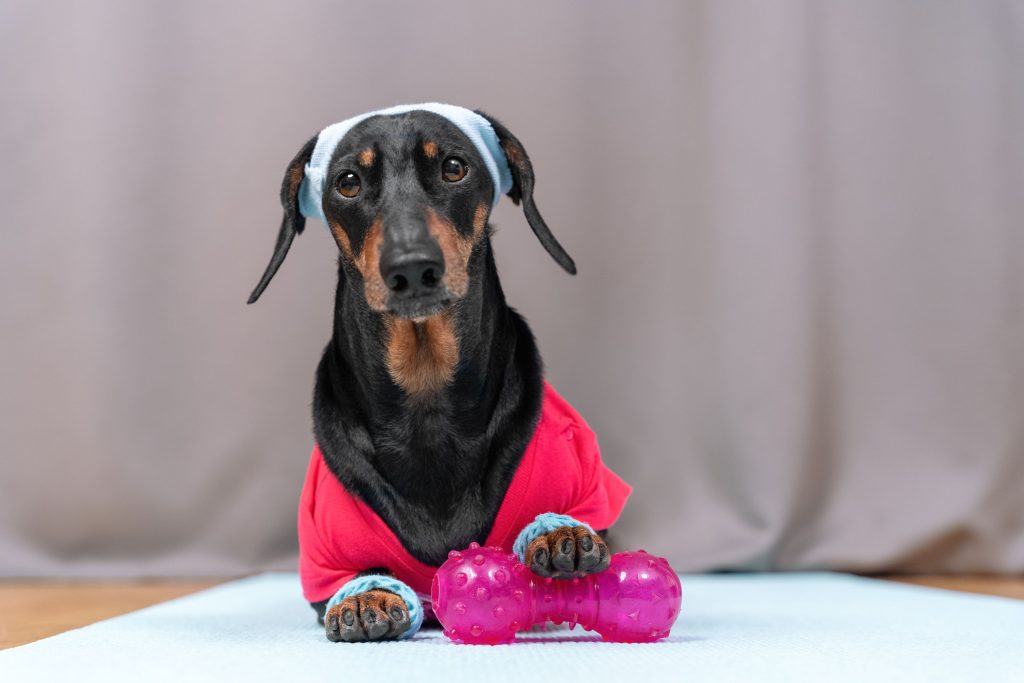Can Dogs Sweat to Cool Down?

In the absence of an efficient cooling system, dogs require special attention to fluctuating internal body temperatures. This is especially true during the hottest summer days, and even more so in dogs with dark fur coats, or thick double coats. Since they are covered with thousands of hair follicles, dogs sweat through their paws, nose, and tongue.
Body Mechanics
Unlike the people that care for them, dogs aren’t built to perspire as a way to cool down their entire skin. The truth is, dogs produce sweat in the parts of their bodies that aren’t covered in hair follicles. You’ve probably noticed your dog’s cool, wet nose, or moist paw prints on hardwood floors. While these sweat glands play important roles in cooling, dogs have another option.
Panting
Dogs sweat primarily through their paw pads, but they also use panting to help with temperature regulation. When they inhale and exhale through an open mouth, the effect is similar to sweating. Warm moisture moves out of the body through respiration and evaporates. Additionally, blood vessels near the mouth and ears enlarge, contributing to a cooling effect.
When Your Dog Needs More
While panting and sweating are essential mechanisms in the canine defense against overheating, the only real solution to a high body temperature is water and shade. Dehydration and heat stroke are real risks to dog safety and can be prevented in the following ways:
- Avoid the heat of midday. Only exercise with your dog in the early morning and evening hours.
- Always have cool, fresh water available. Refill as necessary.
- Bring your pet indoors on hot days and be sure they’re comfortable in a well-ventilated room.
- While the fur coat seems insulating (and in the winter, it is), it actually serves your dog throughout the summer by insulating them against the effects of the heat. If you prefer a lighter coat during the warmer months, it’s best not to completely shave them.
- If they are ever overexposed to the heat, quickly bring them into the shade or air conditioned space, and apply lukewarm compresses to their skin.
- If they ever show symptoms of heat stroke, such as excessive panting, drooling, lethargy, restlessness, dry nose/gums, and water-seeking behavior, seek emergency veterinary assistance.
Dogs Sweat, but Not Really
We urge dog owners to take extra precaution during the summer months. Carry extra water for your dog, seek shade, and do not allow them to overexert themselves in the middle of the day.
By taking these extra steps, and watching your dog closely for any signs of danger, you can prevent dehydration and other ill effects of high heat.
Our team at Dupont Veterinary Clinic takes your dog’s safety and comfort seriously. If you have additional questions or concerns about summer safety, give us a call at (260) 637-7676.
